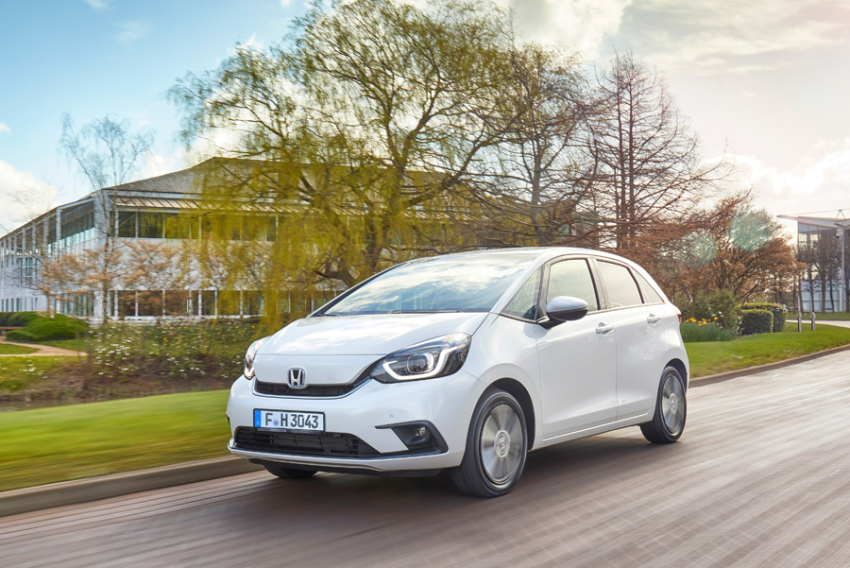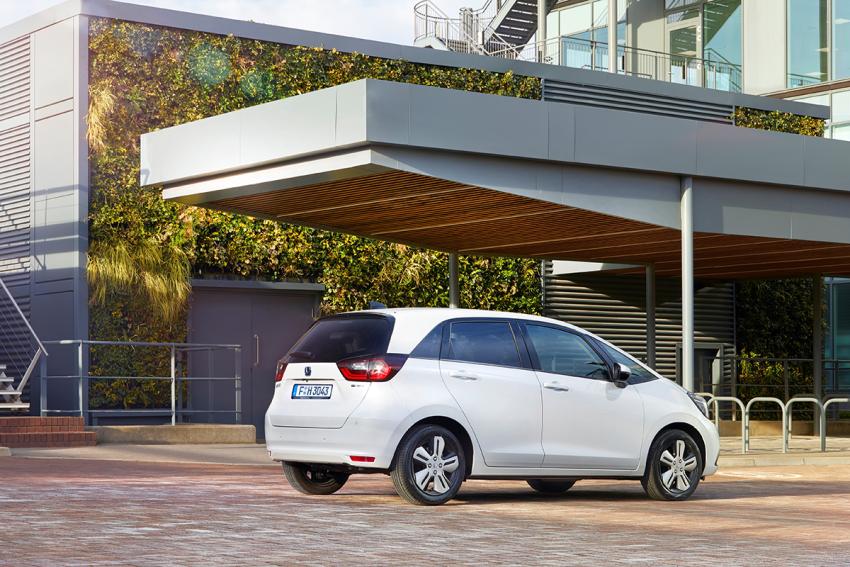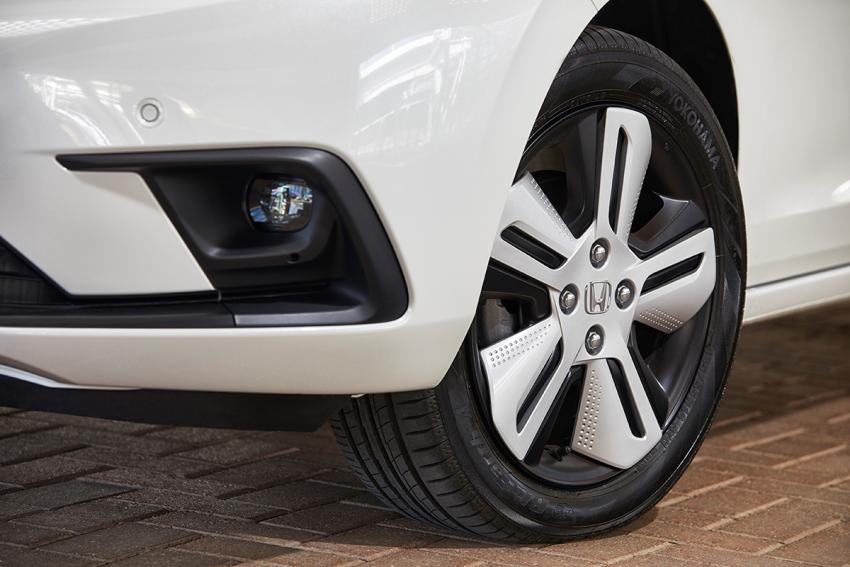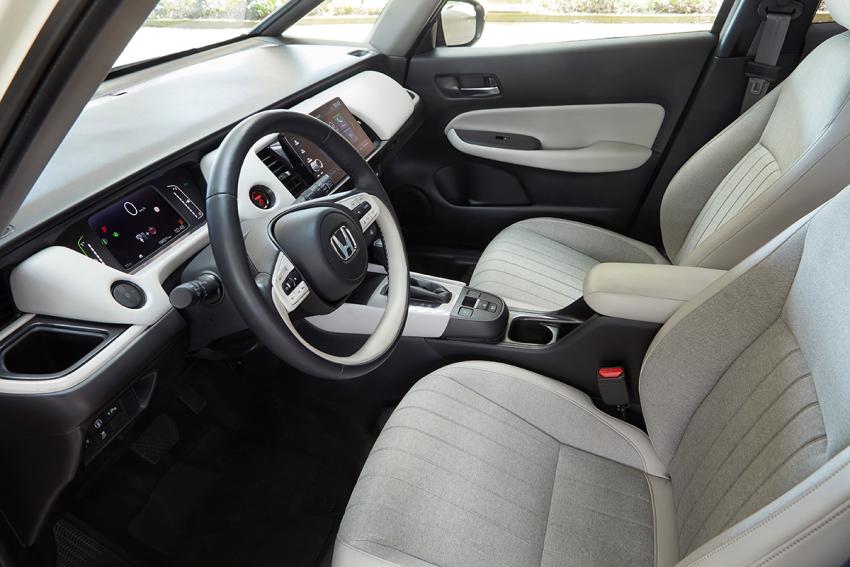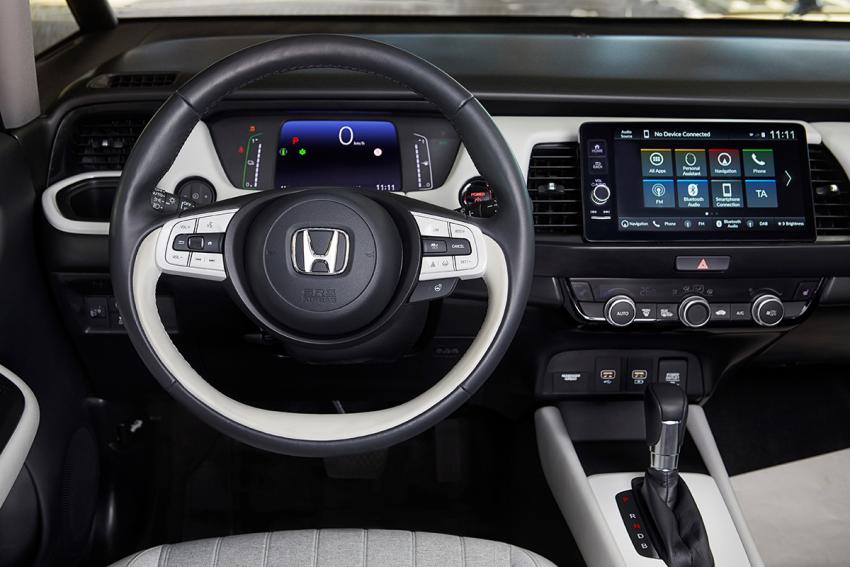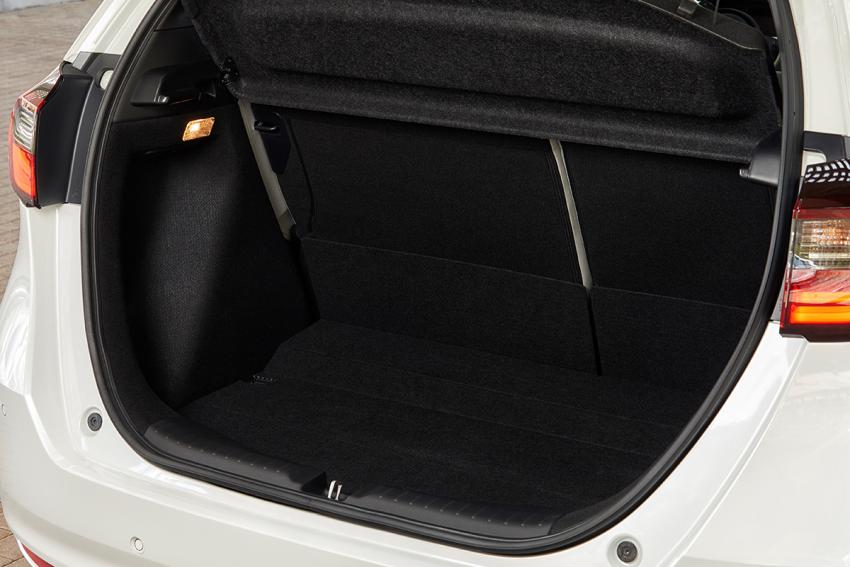Unique, with a decidedly personal style, there is no other like it. Well, not quite, because the Honda Jazz doubles up: a road version, as we are accustomed to, a stylish five-door five-seater, and a brand new Crosstar variant, with a raised body, mimicking SUVs and crossovers, ready even for some light off-road driving without any real off-road ambitions. The Tokyo hatchback – named Fit in Asian markets - made its first appearance in Europe at the dawn of the new millennium (2001), reaching its fourth generation with the 2020 model year, totally redesigned and refreshed in some details last year.
Build around the driver
Halfway between a sedan and a B-class MPV, the Jazz features from the outset an oval silhouette with a sloping bonnet and a large windscreen, which means great visibility and space perception. An attitude that is even more emphasised in this fourth generation, with A-pillars thinned to just 55 mm (a reduction of more than half compared to the previous model) so as to offer, in combination with the front side windows, a 180° view of what is happening outside. Its minimalist approach, called 'Yoo no bi' by the Japanese designers, echoing the oriental concept of beauty in everyday objects, the new Jazz features clean, uninterrupted lines, from the bonnet along the entire side, interrupting this stylistic harmony only with a tapered grille, contoured headlamp clusters, slender mudguards adapted to accommodate 15 or 16 inch wheels, and a sloping rear window with a wide tailgate aligned with the floor for easy access.
Although the size is that of a common hatchback (4.04 x 1.69 metres and 1.53 metres in hight - a few cm more for the Crosstar version), the room inside guarantees enough space for all five occupants, thanks to a wheelbase lengthened to 2,517 mm, with appreciable legroom for the rear passengers. For those who prefer more punch, the Crosstar version benefits from an SUV-like trim, a two-tone roof with handrails and customised 16" alloy wheels, as well as a 16 mm higher ground clearance to 152 mm. The housing of the fuel tank under the front seats favours the luggage compartment capacity, which, in the absence of a spare wheel - replaced by the emergency kit – guarantees 304 litres loading space (6 litres less for the Crosstar), expandable to 1205 litres by folding down the rear seats.
As sleek and clean as the exterior, the all-digital dashboard includes a 7-inch display with traffic sign recognition (TSR), and a 9-inch central touchscreen for infotainment and on-board life management, which can be interfaced with your smartphone for remote control of different functions, from climate control to route planning. Communication with the car can also take place vocally, through Honda’s APH Personal Assistant capable of creating meaningful conversations by providing access to a range of online functions and services. Active and passive safety, according to Honda standards, passes through a structural design aimed at absorbing kinetic forces, with greater use of high-strength steels (80% more than the previous model) with programmed deformation, completed by a set of 10 airbags, and a particularly complete line up of Adas and dynamic control devices, guaranteed by the Honda Sensing package. On the Jazz, already included in the entry level version, we find other crucial albeit less obvious devices, such as the driving assistance systems supported by sensors and a new high-definition wide-angle camera, linked to the vehicle’s adaptive cruise control, lane keeping and impact-reducing emergency braking.
True to its musical name, the Honda Jazz boasts a 180-watt hi-fi audio system, amplified to 376 watts, with rear subwoofer, on the more generous Crosstar version.
E-motors on the front wheels
The Honda-designed hybrid drive system, under the e:HEV acronym, is simple and effective, as well as space-saving, as evidenced by the very compact front end. Two electric motors at the front, with an impressive 109 bhp and 253 Nm of torque, connected directly to the wheels, offer an immediate torque when driving in E-mode, filtered by an e-CVT continuously variable transmission with programmed engagement only when surplus traction is required, with the combustion engine providing the needed power. For this, the only option offered is the 1.5-litre DOHC variable valve timing 4-cylinder i-VTEC with Atkinson cycle. During EV driving, the latter acts as a generator, charging the lithium-ion battery pack, automatically engaging when the vehicle moves above a certain speed threshold, or when extra power is required, perhaps when overtaking. The IC engine is engaged or disengaged very smoothly via the PCU power control unit, alternating between battery charging only or traction depending on the selected driving mode: EV Drive, Hybrid Drive or Engine Drive. On the road, active safety is ensured by an array of electronic devices including dynamic stability control AHA (Agile Handling Assist), which kicks-in by lightly breaking the inside wheel during steering and facilitates cornering even at higher speeds. Four disc
brakes, including self-ventilating 262 mm diameter brakes at the front, are able to easily bring a car to a halt, assisted by Brake Assist, Hill Start Assist and the ABH (Automatic Brake Hold) parking brake.
This being said, the Jazz's placid appearance is matched by performance that is anything but shy, with handling and grip provided by the independent-wheel platform at the front and aluminium torsion axle at the rear. The 10 mm lowered centre of gravity provides additional stability, even when pushing the limits. Not a super sports car, the Jazz can, however, count on an honourable top speed of 175 km/h, with 0-100 km/h acceleration in 9.4 seconds (1/10 more with 16" wheels and an additional half second for the Crosstar), against declared NDEC fuel consumption of between 25.6 and 27.8 km/litre - depending on the version - and emissions in the region of 82 g/km of CO2. The wheel unit, with steel or alloy wheels, customised according to the trim, and low rolling resistance, can rely on sizes ranging from 185/60 R15 to 185/55 R16.
